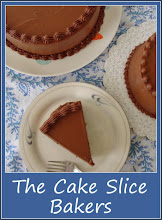 I can’t believe it is the beginning of December tomorrow! November has just flown by. I saw the Christmas Coco Cola advert last night. You know it’s nearly Christmas when that appears on the TV, and even though I’m not a coca cola fan I love the advert – it always makes me feel festive and brings back memories of excited anticipation of Christmas approaching when I was younger. What do any of you associate with the start of Christmas? Putting up your tree, a song or on the radio or a bite of your first mince pie? I personally began feeling rather festive when I backed my Christmas cake last weekend. If you haven’t baked yours yet, don’t worry there is still time.
I can’t believe it is the beginning of December tomorrow! November has just flown by. I saw the Christmas Coco Cola advert last night. You know it’s nearly Christmas when that appears on the TV, and even though I’m not a coca cola fan I love the advert – it always makes me feel festive and brings back memories of excited anticipation of Christmas approaching when I was younger. What do any of you associate with the start of Christmas? Putting up your tree, a song or on the radio or a bite of your first mince pie? I personally began feeling rather festive when I backed my Christmas cake last weekend. If you haven’t baked yours yet, don’t worry there is still time.This year I decided to also make a Christmas pudding, something I have never attempted before. For those of you who may not know, a Christmas pudding is a sort of cross between a Christmas cake and mincemeat (the kind found in mice pies not bolognaise!). Your soak your fruits in alcohol before using them, like a Christmas cake, but you then mix these into a spiced cake batter than contains suet, like mincemeat (vegetable suet). The mix is then placed into a pudding basin and part boiled, part steamed in a pan of water for several hours. This produces a very moist and soft pudding, that has all the flavours of Christmas cake only slightly more spongy and less densely fruited. The pudding is kept for several weeks to allow the flavour to mature and develop. Then on Christmas day the pudding is heated, doused in Brandy and set alight. The lights are quickly turned down and people ‘ohhh’ and ‘arrrrh’ as wispy blue flames dance around the pudding giving a spectacular end to the Christmas meal.

Last week I saw this recipe for a Christmas pudding in a supplement given away with the newspaper. It’s based (apparently) on the Christmas puddings they sell in Bettys of Taylors and Harrogate. I have always been impressed with their bread and cakes whenever I have visited and the pudding sounded quite straightforward so I decided to give it a go. The pudding does require 5 hours of boiling/steaming, but don’t let that put you off. As long as you check the water level a couple of times during cooking, it can be left to its own devises. The actually making of the pudding is very quick and easy.

Obviously I haven’t tasted it yet, but it looks very moist and smells very traditional, warming spices, boozy fruits and a hint of citrus. It doesn’t look all that appetising before you cook it, but it transforms into a lovely looking pudding after its steam session. It’s currently wrapped up tight and hidden away under the stairs until its big reveal on Christmas Day. I’ll try and catch a shot of it on fire to show you later. It’s just occurred to me how odd it sounds to want to purposely set food on fire!
I nearly forgot, don’t forget to give your Christmas cake its weekly feed of one tablespoon of your chosen booze. It appreciates some festive spirit too *groan* couldn’t resist!
Bettys Traditional Christmas Pudding
 Ingredients
Ingredients230g raisins
50g currants
75g sultanas
50g glace cherries
Zest of 1 lemon
Zest of 1 orange
100ml Brandy
15g flaked almonds
25g chopped hazelnuts (my addition)
50g vegetable suet
30g wholemeal breadcrumbs
50g plain flour
90g light soft brown sugar
½ tsp mixed spice
¼ tsp nutmeg
¼ tsp cinnamon
¼ tsp ground cloves
1 tsp salt
2 eggs, lightly beaten
Method
The day before, place all the dried fruits into a bowl. Grate the orange and lemon zest over the top and pour in the Brandy. Give everything a good stir, cover the bowl with clingfilm and set aside for 24 hours to allow the fruits to plump up and absorb some of the Brandy.
The next day, place all the remaining ingredients into a large bowl. Add the soaked fruits, scraping in any leftover juices. Mix together lightly with a wooden spoon until everything is evenly combined.
Place a small disc of parchment paper in the base of a 1½ pint pudding basin. Fill the basin with the pudding mix, pressing down lightly. Place another disc of parchment on top and cover the top of the basin with a sheet of foil. Fold a little crease into the middle of the foil to allow it to rise with the steam.
Tie a long strip of string around the top rim of the pudding and then secure it over the top of the basin from one side to the other to form a string handle. (This will help you retrieve the pudding from the pan later without burning yourself).
Place a trivet or small unturned saucer in the base of a deep saucepan – it must be wide enough to hold your pudding.
Place the pudding on the upturned saucer, boil the kettle and fill the pan with the hot water until it reached half way up the side of the pudding basin.
Bring the water to a boil, then reduce to a simmer, cover with the lid and leave to simmer gently for 5 hours. It does not need to boil rapidly.
Every 2 hours lid the lid of the pan to check the water level. Add more boiling water if it’s looking low.
Once the 5 hours is up, lift the pudding out of the pan with the help of the string handle. Place on a cooling rack, remove the foil and leave until cool. Leave it in the basin and with the parchment disc still on top. Once cooled, wrap tightly in clingfilm and store in a cool dark place until required, the longer the better.
On Christmas Day, steam the pudding again for 2 hours to heat through thoroughly. Turn out onto a serving plate that has a rim. Carefully warm a ladleful of Brandy until it ignites and quickly pour it over the pudding to flambé. Take it to the table and serve with Brandy butter or custard once the flames have extinguished. Alternatively, heat the Brandy in a pan, pour it over the pudding and set light to it with a lighter.
Makes 1 pudding, to serve 6 – 8 people



 Once the cannoli dough is made and rested it is rolled out until very thin before squares or circles are cut out and rolled around special cannoli moulds and then deep fried. I didn’t have any cannoli moulds, nor could I find any in the two kitchen shops I visited. I decided to try improvising my own by using the middle thick cardboard tube from the end of my clingfilm. It seemed the right sort of size and very study and I was able to get four good tubes from it. I felt quite pleased with my ingenuity and hoped it would work. I wrapped my dough around the tubes and dropped them into the hot oil. They dropped to the bottom of the pan then rose to the surface and started to sizzle – hurrah it worked – or so I thought. The dough stayed around the tubes for about 5 seconds before suddenly puffing up and springing free from the tubes into weirdly shaped blobs. Well darn. Strangely enough they also puffed up and became hollow, like very fragile fried profiterole shells. I’ve no idea why this happened but it did offer me a solution of how to fill my cannoli so it wasn’t a total loss.
Once the cannoli dough is made and rested it is rolled out until very thin before squares or circles are cut out and rolled around special cannoli moulds and then deep fried. I didn’t have any cannoli moulds, nor could I find any in the two kitchen shops I visited. I decided to try improvising my own by using the middle thick cardboard tube from the end of my clingfilm. It seemed the right sort of size and very study and I was able to get four good tubes from it. I felt quite pleased with my ingenuity and hoped it would work. I wrapped my dough around the tubes and dropped them into the hot oil. They dropped to the bottom of the pan then rose to the surface and started to sizzle – hurrah it worked – or so I thought. The dough stayed around the tubes for about 5 seconds before suddenly puffing up and springing free from the tubes into weirdly shaped blobs. Well darn. Strangely enough they also puffed up and became hollow, like very fragile fried profiterole shells. I’ve no idea why this happened but it did offer me a solution of how to fill my cannoli so it wasn’t a total loss.
 Cannoli Dough
Cannoli Dough Line a sieve with a cheesecloth or sheet of kitchen roll. Place the ricotta in the sieve, over a bowl, and cover with a saucer. Weight it down with a heavy can, and let the ricotta drain in the refrigerator for at least 2 hours or overnight.
Line a sieve with a cheesecloth or sheet of kitchen roll. Place the ricotta in the sieve, over a bowl, and cover with a saucer. Weight it down with a heavy can, and let the ricotta drain in the refrigerator for at least 2 hours or overnight.



 Ingredients
Ingredients

 Ingredients
Ingredients



 For the Cake
For the Cake Heat the sugar in a cast iron skillet or another heavy bottomed pan with high sides. Heat over a medium-low heat, stirring occasionally, until the sugar melts into a clear brown caramel syrup. It should be the colour of tea. Gradually add the boiling water, pouring it down the sides of the pan so that if the syrup foams and bubbles up, you should be protected.
Heat the sugar in a cast iron skillet or another heavy bottomed pan with high sides. Heat over a medium-low heat, stirring occasionally, until the sugar melts into a clear brown caramel syrup. It should be the colour of tea. Gradually add the boiling water, pouring it down the sides of the pan so that if the syrup foams and bubbles up, you should be protected. Heat the oven to 180C. Grease and flour two 9 inch round cake pans.
Heat the oven to 180C. Grease and flour two 9 inch round cake pans. In a large bowl, combine the icing sugar, the burnt sugar syrup, butter and vanilla. Beat with a mixer at medium speed for 2 to 3 minutes, scraping down the bowl now and then to bring the ingredients together. Add 2 tablespoons of the milk and continue beating until the frosting is thick, soft, smooth and easy to spread. Add a little more sugar if it is thin, and a little more milk if it is too thick.
In a large bowl, combine the icing sugar, the burnt sugar syrup, butter and vanilla. Beat with a mixer at medium speed for 2 to 3 minutes, scraping down the bowl now and then to bring the ingredients together. Add 2 tablespoons of the milk and continue beating until the frosting is thick, soft, smooth and easy to spread. Add a little more sugar if it is thin, and a little more milk if it is too thick. Mix the sugar and cinnamon together in a small bowl. Peel, quarter and core the Bramley apple and cut into ½ cm slices. Melt the butter in a large frying pan and add the apple slices. Cook for 1-2 minutes until just beginning to soften. Carefully turn over onto the uncooked side and scatter over the cinnamon sugar. Cook for 1 minute more before removing from the heat and leaving the apple to cool in the pan before using.
Mix the sugar and cinnamon together in a small bowl. Peel, quarter and core the Bramley apple and cut into ½ cm slices. Melt the butter in a large frying pan and add the apple slices. Cook for 1-2 minutes until just beginning to soften. Carefully turn over onto the uncooked side and scatter over the cinnamon sugar. Cook for 1 minute more before removing from the heat and leaving the apple to cool in the pan before using.


 Ingredients
Ingredients


 Ingredients
Ingredients
 As promised, here are the recipes for the other sweet treats I made for the afternoon tea party I had recently to accompany the
As promised, here are the recipes for the other sweet treats I made for the afternoon tea party I had recently to accompany the  You can’t have a traditional afternoon tea without the presence of fruitcake. As I was aiming for elegant food, I decided to experiment with baking the fruitcake mix in cannelé moulds in order to make them bite size. This worked a treat and when topped with a little marzipan flower I think they turned out rather dainty. You could eat a couple while still leaving room to sample other things and baking them individually meant they cooked very evenly and stayed wonderfully moist.
You can’t have a traditional afternoon tea without the presence of fruitcake. As I was aiming for elegant food, I decided to experiment with baking the fruitcake mix in cannelé moulds in order to make them bite size. This worked a treat and when topped with a little marzipan flower I think they turned out rather dainty. You could eat a couple while still leaving room to sample other things and baking them individually meant they cooked very evenly and stayed wonderfully moist. Weight out the raisins, currants and sultanas into a bowl. Sort through the fruit a handful at a time, removing any stalks still attached to the fruit (these won’t be nice to crunch on).Cut the apricots and cherries into small pieces and same size as the raisins. Grate over the zest of the orange and lemon.Drizzle over the brandy, give everything a stir and then cover the bowl with clingfilm and leave for at least 4hours or preferably overnight to allow the fruit to absorb the brandy and plump up.
Weight out the raisins, currants and sultanas into a bowl. Sort through the fruit a handful at a time, removing any stalks still attached to the fruit (these won’t be nice to crunch on).Cut the apricots and cherries into small pieces and same size as the raisins. Grate over the zest of the orange and lemon.Drizzle over the brandy, give everything a stir and then cover the bowl with clingfilm and leave for at least 4hours or preferably overnight to allow the fruit to absorb the brandy and plump up. I had to include something rich and chocolaty for the chocoholics in my family and these little truffle squares were ideal. You can flavour the chocolate truffle any way you wish but I decided to use a little blossom honey to add a floral note and a touch of sweetness. Adding a small amount of liqueur, the zest of an orange or some strong espresso would also be good. As the truffles were being served with the rest of the afternoon tea treats, I decided to make some small tuile squares on which to serve them. This made them easier to pick up and eat, as the truffles can turn slightly soft if they are left out for more than half an hour and I didn’t want people getting chocolate over their fingers – not ideal for an elegant tea party!
I had to include something rich and chocolaty for the chocoholics in my family and these little truffle squares were ideal. You can flavour the chocolate truffle any way you wish but I decided to use a little blossom honey to add a floral note and a touch of sweetness. Adding a small amount of liqueur, the zest of an orange or some strong espresso would also be good. As the truffles were being served with the rest of the afternoon tea treats, I decided to make some small tuile squares on which to serve them. This made them easier to pick up and eat, as the truffles can turn slightly soft if they are left out for more than half an hour and I didn’t want people getting chocolate over their fingers – not ideal for an elegant tea party! Ingredients
Ingredients






